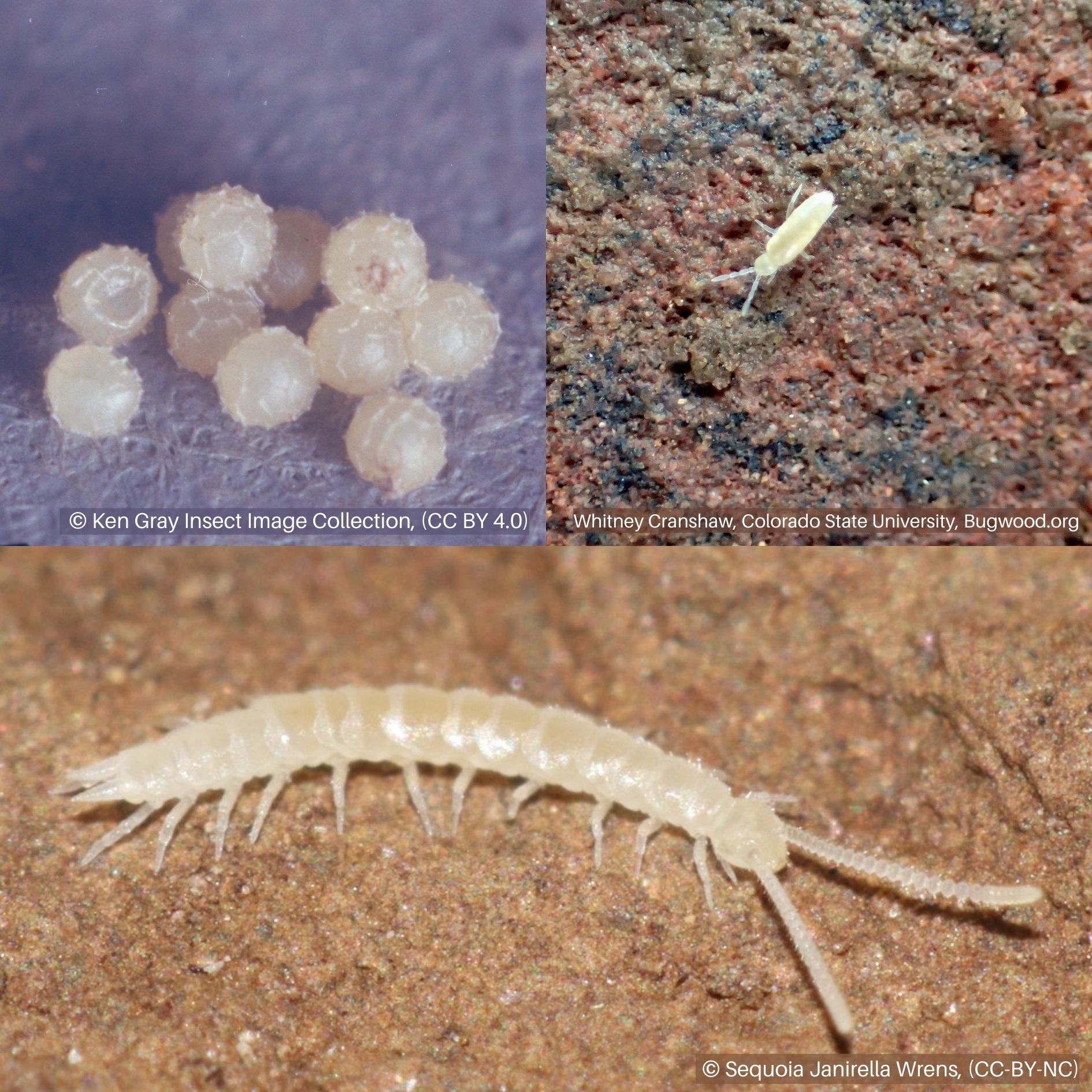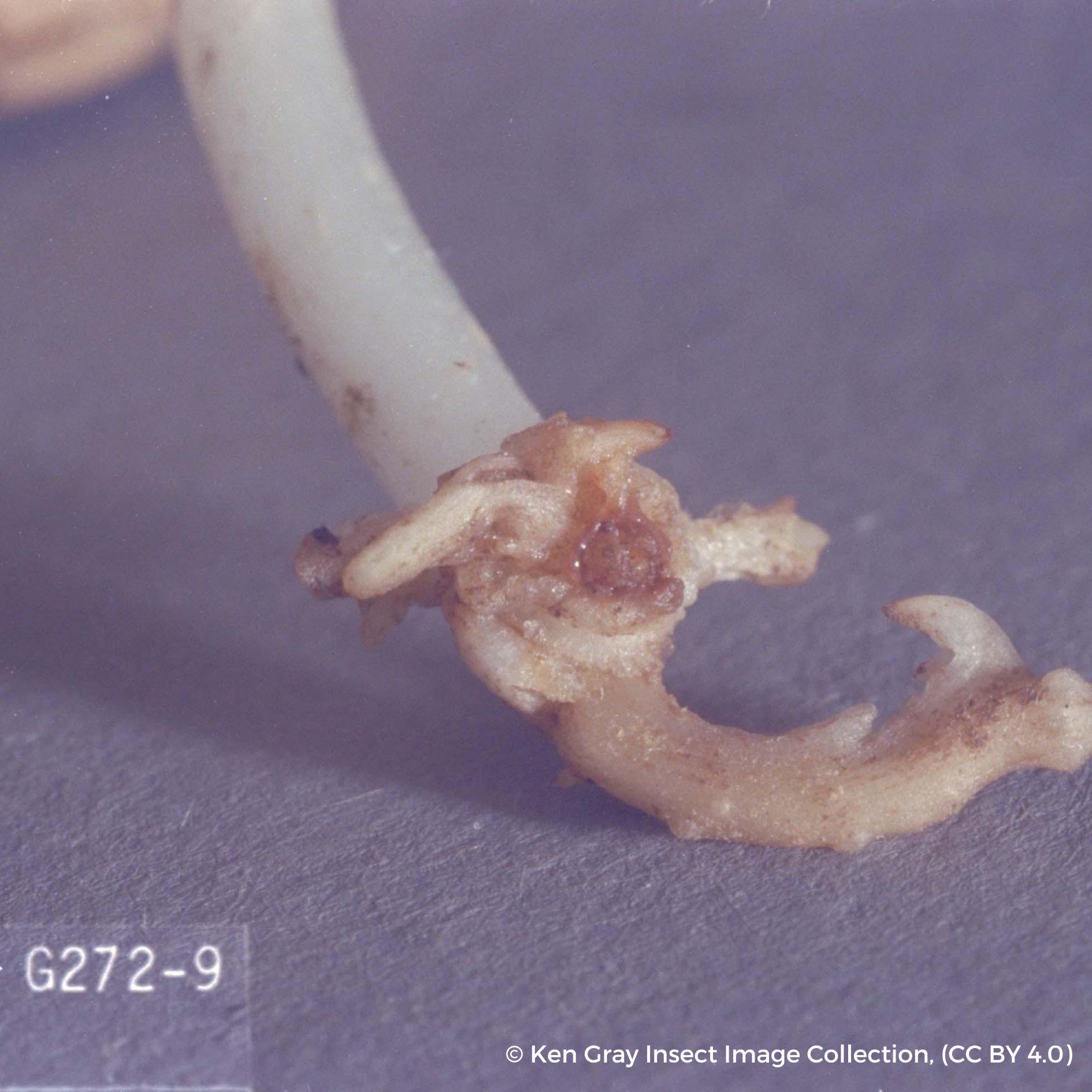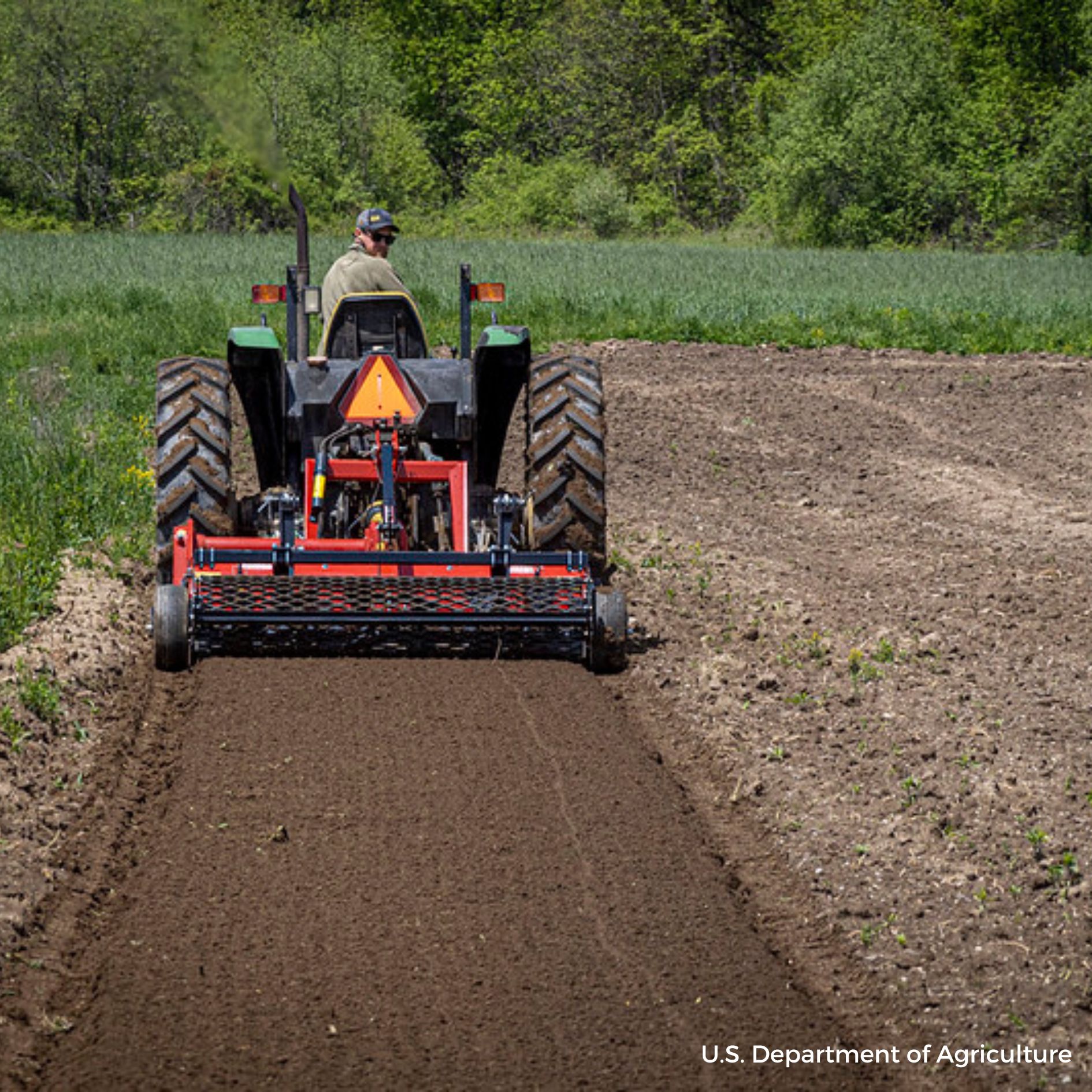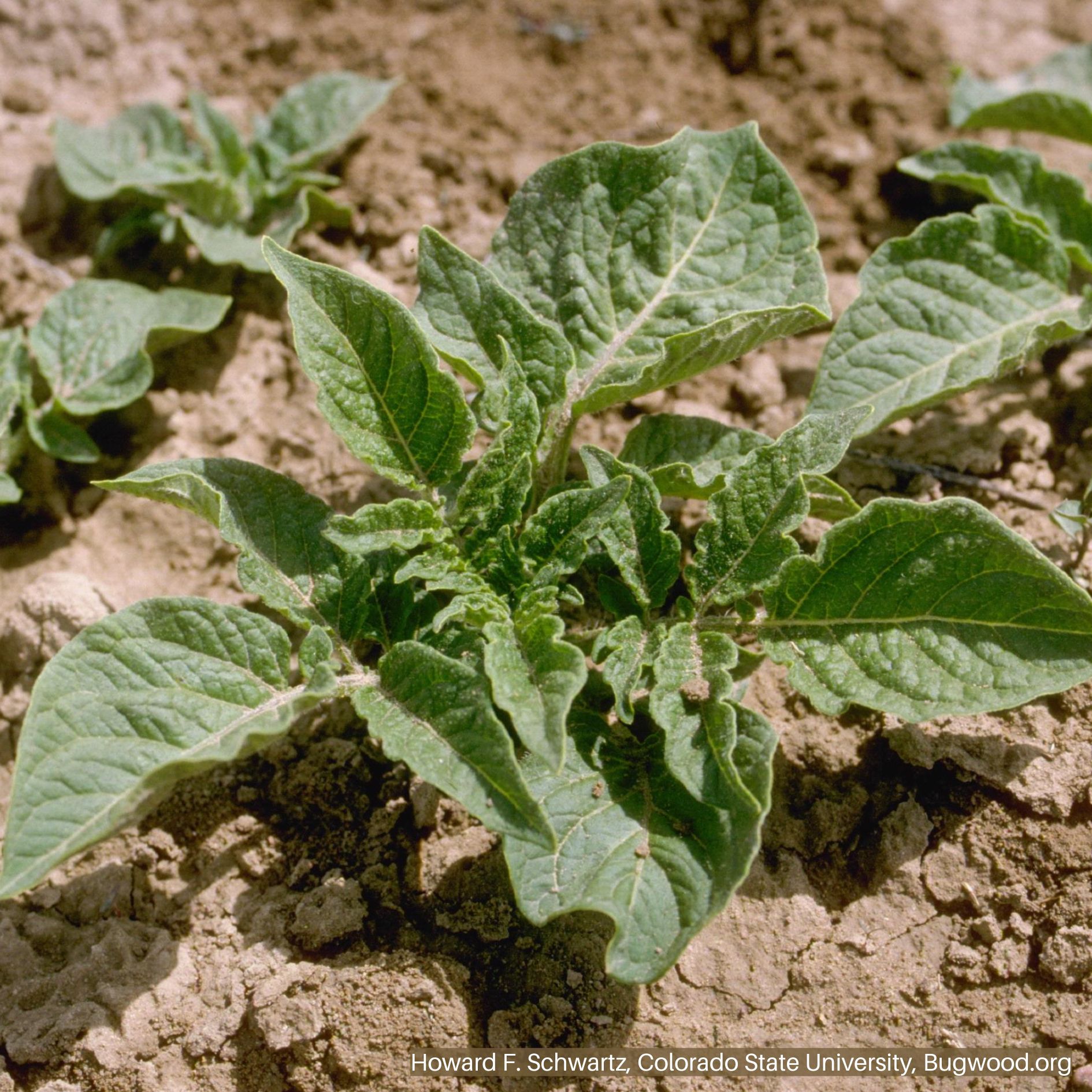Garden Symphylan
 Garden Symphylan Life Stages
Garden Symphylan Life Stages Garden Symphylan Feeding Damage
Garden Symphylan Feeding Damage Tilling is a management strategy for garden symphylans.
Tilling is a management strategy for garden symphylans. Potatoes have high resistance to symphylan damage.
Potatoes have high resistance to symphylan damage.HOSTS
- Asparagus
- Brassicas
- Cucurbits
- Leafy Greens
- Root Crops
- Cucurbits
- Solanaceae Crops
DESCRIPTION
Adults are slender, elongated, “centipede-like”, and white with prominent antennae. They have 15 body segments, 10-12 pairs of legs, and move rapidly when disturbed. Nymphs hatch with only 6 pairs of legs, and gain additional pairs when molting. All life stages occur in the soil, typically in the upper few inches.
BIOLOGY
Egg | Nymph | Adult
Garden symphylans have 1-2 generations per year. They are found in heavy clay soils, especially those with high in organic matter. Adults overwinter in the soil and primarily lay eggs are in the spring and fall. However, all life stages can be found together in the soil most of the year. They feed on sprouting seeds and underground plant parts. Heavy feeding can cause root damage.
SYMPTOMS
- Root death on younger roots,
- Older roots with a gnarled appearance with corky tissues forming around wound sites.
- Reduced stands.
- Stunted plant growth.
SCOUTING
- Garden symphylans are not always easy to find due to their patchy distribution. They tend to occur in “hotspots” of a few square feet to several acres.
- Soil, bait, and indirect sampling are the three main sampling methods used to identify damage and inform management decisions.
GENERAL MANAGEMENT
- Plant crops tolerant to symphylan damage such as potato, bean, and small grains.
- Till the soil. It physically crushes the symphylans, reducing the population.
- Use transplants instead of direct seed or increase transplant size (not effective for broccoli and eggplant).
INSECTICIDES
Noticeable damage often occurs if garden symphylans exceed an average of 5-10 per shovelful in moderately to highly susceptible crops such as broccoli, squash, spinach, and cabbage. In conventional cropping systems, 2-3 garden symphylans per square foot is commonly used as a treatment threshold.

